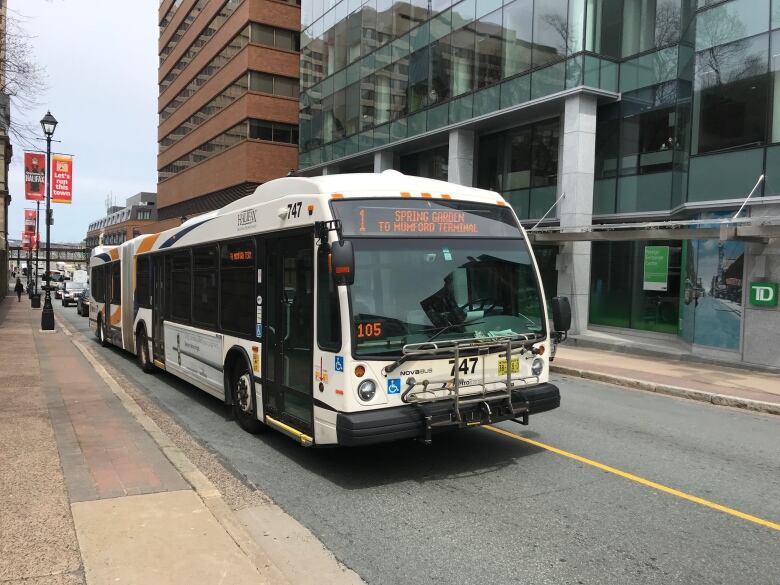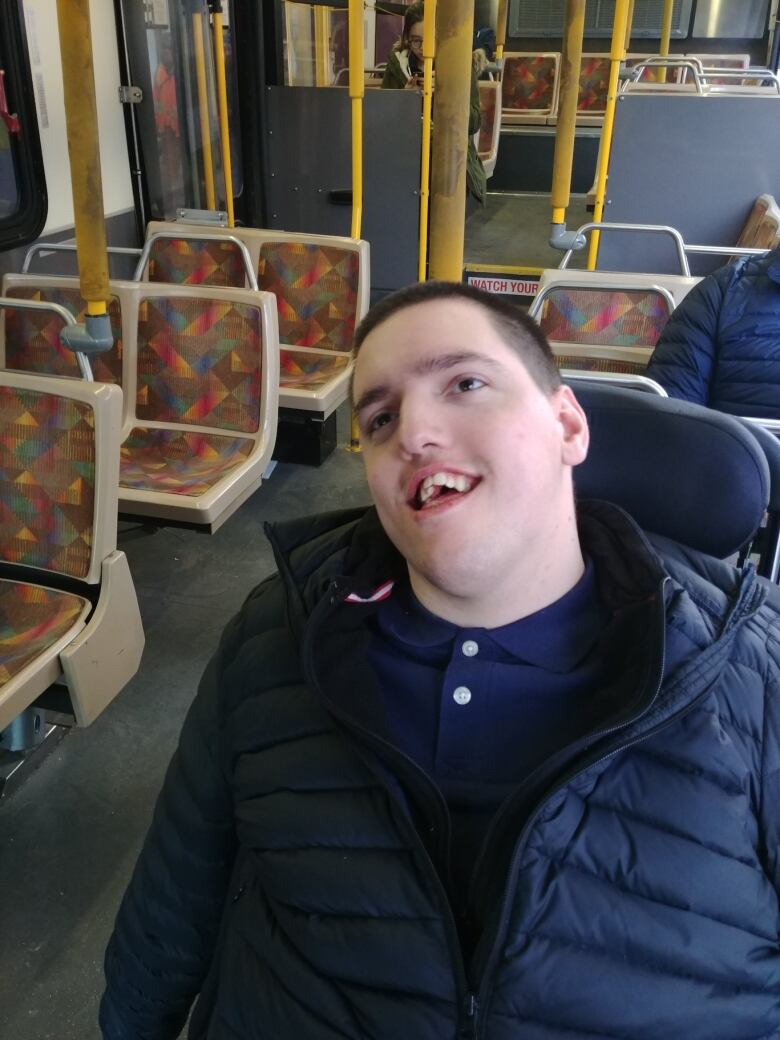Riders question safety of Halifax Transit's wheelchair restraints
Transit system moving to a new wheelchair restraint system, but it's only on 24 buses so far

A wheelchair user and his support worker are raising concerns about the tie-down system meant to secure wheelchairs on Halifax city buses.
Noah Isenor and Kate Harris say the current wheelchair strap system is dangerous and training for drivers in how to use it is inadequate.
Isenor has cerebral palsy and uses a wheelchair to get around. He has difficulty speaking and prefers to communicate through yes or no replies to his support worker, Kate Harris.
"I don't know how they could possibly think it's safe," said Harris. "It makes me incredibly uncomfortable, but unfortunately there's not that many other options."
Isenor and Harris take the bus about 10 times a week, sometimes riding it two or three times in a single day. There are different types of restraint systems on buses, but on the majority of buses they use, there is a rear-facing restraint system that they find particularly worrying.

"With that type of system, the only thing that is securing Noah's wheelchair is just one little seatbelt around one spot on the back of his chair," said Harris.
Harris saidshe always positions herself by Isenor's wheelchair and braces it with her body. She began doing this after the wheelchair slid across the floor or almost tipped over on several occasions.
"It doesn't leave us feeling very safe, and it's not just that we don't feel safe it's not safe," she said of the restraint system.

"Even when it's working properly, it's not securing his chair well at all. And when it's not hooked up properly or it's not functioning properly, it's incredibly dangerous, not just to him, but to other people on the bus because anyone could get hit by it that's in proximity."
Harris saida transit employee gave her a section of the driver manual that cautions employees there havebeen incidents of a"chair move or tip over" with the rear-facing system. She also saidmany drivers are unsure ofhow to attach the system properly, which makes the problems worse.
Dwayne Isenor, Noah's father, said he's also concerned about his son's safety when takingpublic transit.
"When you have a child with special needs, it's just a constant battle," he said. "You must be their advocate, because if they don't have a voice which a kid like Noah doesn't have his own voice the world will give you what they deem is acceptable."
CSA-approved system
Mike Spicer, Halifax Transit's manager of operations, said the rear-facing system does meet Canadian Standards Association requirements, but he didn't comment on how a single-point tie-down compares to a multiple-point tie-down.
"They meet all the safety standards and it's personal preference as to how people want to be secured in a bus," he said.
A year ago, Halifax Transit consulted on wheelchair restraints with disability advocate Paul Vienneau, who field-tested a three-point tie-down called the Q-Pod.

"When I'm on the bus with the one-strap, my butt's on the chair, one hand up on the hanger strap, and one arm looped around the seat beside me, and I still don't feel safe," Vienneau said.
"So with the new system, they took me for the ride-along last September, I had my hands up off my chair completely and felt completely safe."
Spicer saidHalifax Transit will now order two Q-Pods on every new bus as its fleet is slowly replaced. So far, there are 23 conventional buses with two Q-Pods and one bus with a single Q-Pod. The entire fleet has 323 buses, according to Halifax Transit's January 2019 business plan.

Spicer couldn't say how long it would take to replace the entire fleet, but said the other types of restraints would still be used until then.
"That would be up to the customer to decide how they feel secure," he said. "We've had no issues with the rear-facing [system], but we have found that our customers prefer the forward-facing [one] and the Q-Pod tie-down. We went to the community to receive feedback, and we're following what the community's response was."
Driver training questions
Harris saidshe and Isenor have had one experience with the Q-Pod restraint system and it was good. However, she said even if the Q-Pod-systemwas installed on all buses, she's not confident drivers are receiving enough training in using wheelchair restraints.
"They're definitely getting training on it, but if by the time they have to use the training they don't remember it, clearly something needs to change," she said.
Spicer said Halifax Transit has heard concerns like this and in those cases has given additional training to both the customer and the driver involved.












_(720p).jpg)


 OFFICIAL HD MUSIC VIDEO.jpg)
.jpg)



























































































